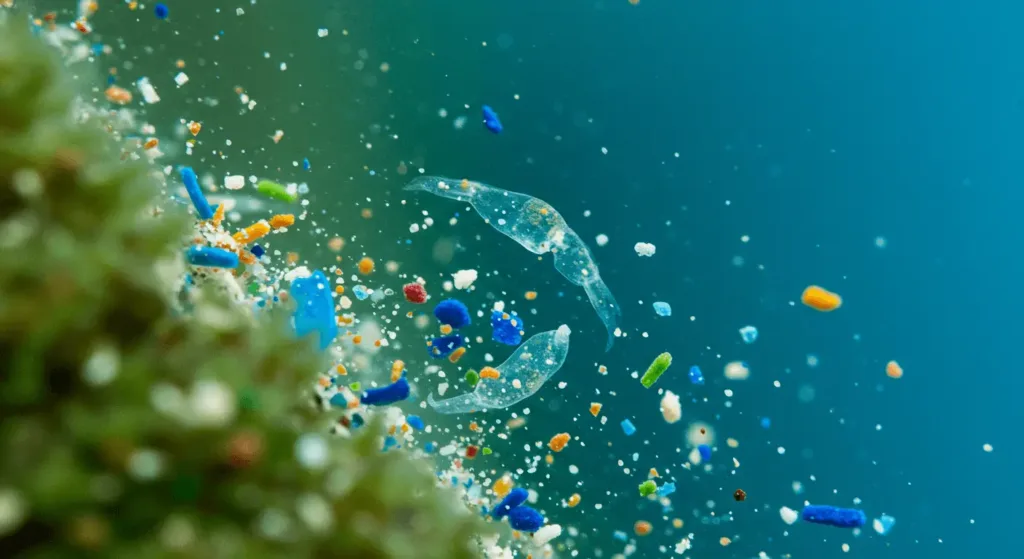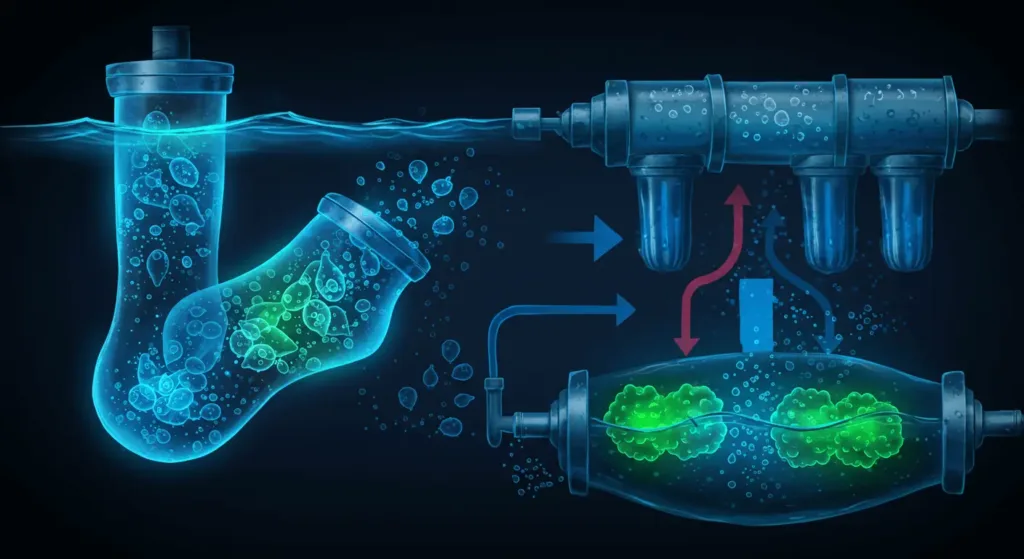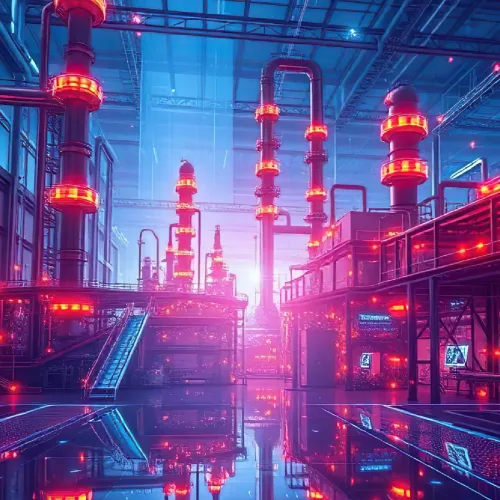
Clean water is a great blessing. It is equally essential for both humans and animals. We all understand the importance of clean water. Schools, colleges, and communities emphasize its significance, although we see polluted our water has become today. We often see images of our beaches filled with plastic bottles and bags. It doesn’t stop here. Tiny plastic particles, even smaller as a grain of rice, are polluting our rivers, oceans, and even our drinking water. These tiny particles are known as microplastics, and they are the most critical issue of our time. But, we know that this is not just a problem of today. The future of our coming generations also depends on it. Hence, addressing this issue is crucial. Organic chemistry is playing a major role in microplastic pollution. Scientists are exploring innovative solutions to control this environmental crisis.
In this article, we will explore how organic chemistry is used to control microplastic pollution and purifies our drinking water. We will first understand that what are microplastics and how they affect human health. Then, we will explore how organic chemistry is playing its role. We will examine the new solutions being developed. There will be some examples included. We will also discuss the challenges we face and explore how we can play our part in it. So, let’s get started.
Microplastics and Their Effect on the Environment
Microplastics are tiny particles with a size of less than five millimeters, much like a sesame seed. The question arises, where do they come from? How they are formed? The simple answer is that they are found everywhere. As for how they are formed, let’s dive into the details. They are found in cosmetics, which are particularly popular among women. They exist in clothing fibers like polyester, and even in our favorite hoodies, plastic bottles. Over time, when this martial break down, they generate these tiny particles. According to a study, more than 24 trillion pieces of microplastics are floating on the world’s oceans.

Microplastics equally impact the health of both humans and animals. Because they are made of chemical compounds, when ingested, they can lead to various diseases. Aquatic creatures, including fish and turtles, when searching for food often consume microplastics as their food. These chemicals settle in their stomachs and cause various infections in their reproductive and immune systems. Similarly, when humans drink polluted water, it gives rise to various diseases.
Up to this point, we have understood that what are microplastics and how significantly they can impact our health. Now, let’s check how organic chemistry can offer solutions to these challenges.
The Role of Organic Chemistry in Microplastic Pollution
As we know, organic chemistry is a branch of science that focuses on the study of carbon related molecules, and guess what? Plastics are also made of carbons. This is the point, where organic chemistry is considered as an excellent tool for fighting microplastic pollution. Chemists use their skills to design new materials, like sustainable packaging materials, that can serve as alternatives to plastic materials. They are also constantly working on innovative solutions to remove these tiny particles found in the environment. Because they understand how these plastics are created at the molecular level, they are in a strong position. This knowledge helps them come up with clever solutions to tackle their impact. Are you eager as I am to learn about these solutions? So, let’s dive in and check out some of these exciting ideas.
1. Creating eco-friendly options that break down naturally
I think it is a magnificent approach to create a type of plastic that naturally decomposes. On the other hand, regular plastic takes hundreds of years to break down. Keeping this in mind, organic chemists developed a material known as Polylactic Acid, which is made from corn scratch. Now it is widely used in packaging materials, because it offers a biodegradable choice compared to traditional plastics. Another material, Polyhydroxyalkanoates, which is derived from bacteria. This versatile material can be used in a wide range of applications, from packaging to medical devices.
It is true that biodegradable materials can help in reducing microplastics in the environment. However, challenge remains there in scaling up their production to meet global demand. Moreover, ensuring that these materials will decompose in all environments, including marine ecosystems, is a difficult task. It requires further research and development.
2. Better filtering and breaking down techniques
Another technique is to filter out the tiny particles found in water or break them down into harmless fragments. Organic chemistry is providing latest ways in microplastic pollution. Although, chemists are working hard on the development of Photocatalysis. These materials are generally inactive. However, when exposed to sunlight, a chemical reaction starts. This reaction breaks down harmful substances like microplastics present in water or air into less harmful substances.

Another method is enzymatic degradation, where small proteins called enzymes chew up plastics as if they were snacks. Scientists performed an experiment to check the ability of catalysts. In this experiment, polluted water was used, and a specific catalyst was added to it. The result of this experiment was astonishing, as the catalyst managed to remove 90% of the microplastics. This was really a remarkable outcome, right?
3. Detection and Monitoring Innovations
Before eliminating anything, it is essential to find it first and then understand it thoroughly. Organic chemistry is helping us in this situation as well. Scientists use fluorescence based tagging, where glowing dyes are added to microplastics. When these tagged particles are observed under the microscope, they light up. Another very important technique is spectroscopy, it analyzes the molecular structure of plastics. This method even helps us to pinpoint the specific type of these tiny particles. Once we analyze where microplastics are hidden, it becomes easier to devise strategies to stop them. Want to see these ideas in action? Let’s take a look at real world applications.
Real-Life Uses and Success Stories
According to latest studies, some water treatment plants are already equipped with advanced filtration systems designed to remove microplastics from wastewater. These systems guarantee the cleaner water and help in to tackle microplastic pollution crisis effectively. Universities, various organizations and governments are collectively working on his issue. For example, in a startup in California created biodegradable plastic from algae. In the Netherlands, a test project was conducted using an advanced filtration system. Polluted water was purified, and it removes 95% of microplastics. These successes show that organic chemistry is not limited to just theoretical discussions. It also plays a major role in making a real difference. However, as we know, this journey is not without challenges. What hurdles are we facing? Let’s explore.
Challenges and Future Directions
So far, all the techniques we have discussed work effectively. But here is a big challenge, how to make these challenges more affordable and scale up their production. Unfortunately, in the current scenario, this process is severely limited. These solutions are still expensive. Their production has not yet reached the level needed to overcome the demand. Along with this issue, there are other challenges as well. Approving the new regulations and policies that allow the use of these advanced technologies. Awareness among people about these eco-friendly materials is rising. Convincing them to adopt these materials also takes time. But, the good news is that the inclination towards such solutions is steadily increasing.
I believe if we continue to accelerate this trend over the next five to ten years and incorporate artificial intelligence into the entire process, we can significantly achieve this goal of cleaner water.
What You Can Do?
If you are wondering that, how you can contribute in this whole process. So, let’s explore some actionable points that are worth considering:
- First and foremost, make a commitment to stop using plastic and switch to reusable materials. Whether it’s straws or bags, make sure that you only use biodegradable products.
- The second and the important point is to opt for clothing made from natural fibers like cotton. Reduce the use of polyesters as much as possible.
- Encourage your friends, family, and community to understand the importance of this topic. Rise awareness about its significance and persuade people to reduce the use of plastics as much as possible.
Don’t think about what you can do alone. Every individual can contribute their part to solve this crisis. Just as drops fills an ocean, small steps can lead to significant solutions. This is not just about today, it’s about the future of our coming generations. It’s about securing their future.
Conclusion
Organic chemistry is just like a superhero in the battle against microplastic pollution. It has proven to be very beneficial in discovering new biodegradable materials. It aids in developing advanced filtration systems. Furthermore, it also raises awareness about the dangerous impact of microplastics. You can bring small changes in your life. These changes can positively impact the environment. You can play a crucial role in addressing this crisis. What will you do to help?



